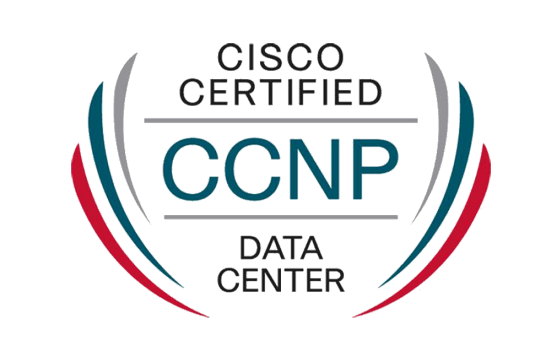Cisco 300-535 Exam Dumps & Practice Test Questions
Question 1:
Which Cisco solution is most suitable for simulating failure scenarios and analyzing the resulting traffic impacts in a Segment Routing-enabled service provider network?
A. Cisco WAN Automation Engine
B. Cisco Evolved Programmable Network Manager
C. Cisco Network Services Orchestrator
D. Cisco Segment Routing Path Computation Element
Correct Answer: A
Explanation:
In modern service provider networks using Segment Routing (SR), it is crucial to anticipate potential issues that might affect network stability or service delivery. Engineers need tools that enable them to model hypothetical network conditions—such as device or link failures—and predict how those conditions could affect traffic paths. This type of forecasting, known as "what if" failure analysis, plays a vital role in capacity planning and improving resiliency.
The Cisco WAN Automation Engine (WAE) is the correct solution for performing such simulations. WAE is specifically designed to model, analyze, and optimize large-scale networks. It provides detailed insights into network behavior under different conditions, including failure scenarios. Its features include:
Traffic engineering simulations: WAE allows users to simulate the effect of various changes, including node or link failures, congestion, or planned maintenance, and observe how Segment Routing paths would adapt.
Path computation capabilities: It computes alternate routes based on pre-defined policies and constraints, such as latency, bandwidth, or specific traffic steering rules.
Forecasting and visualization: WAE visualizes current network state and can simulate future states, aiding engineers in preemptive decision-making.
These capabilities make Cisco WAE the ideal tool for analyzing SR-based network behavior under hypothetical conditions and improving operational resilience.
Let’s now consider why the other options are less suitable:
B. Cisco Evolved Programmable Network Manager (EPN-M): This tool is primarily used for fault, configuration, and performance management. It focuses on network monitoring and inventory management but lacks the simulation and modeling features required for "what if" failure analysis.
C. Cisco Network Services Orchestrator (NSO): Cisco NSO is valuable for automating network services across multi-vendor environments but is not built to simulate failures or model traffic behavior in SR networks.
D. Cisco Segment Routing Path Computation Element (SR-PCE): SR-PCE is used for real-time path computation and enforcement in Segment Routing, not for hypothetical modeling or simulation of network failures.
In summary, Cisco WAN Automation Engine (WAE) stands out as the only tool in this list capable of conducting a comprehensive “what if” analysis in a service provider environment running Segment Routing.
Question 2:
An engineer attempts to use Cisco XTC to delete a Segment Routing policy using a RESTful API call, but receives a 404 Not Found response. What is the most likely cause of this issue?
A. The specified resource does not exist on the server
B. Port 8080 is not activated on Cisco XTC
C. Cisco XTC does not support API access
D. The HTTP request method is incorrect
Correct Answer: A
Explanation:
A 404 Not Found error in an HTTP response indicates that the server was reachable, but the specific resource path requested does not exist. This status is typically returned when the client makes a valid connection but specifies a non-existent endpoint or resource.
In the scenario, the engineer is attempting to use a DELETE method to remove a Segment Routing (SR) policy via the Cisco XTC (Crosswork Traffic Controller) REST API. The request structure appears correct and targets the URL http://10.1.1.1:8080/srpolicy-install. However, the server responds with a 404 error, signaling that the path /srpolicy-install is not recognized, or the resource it points to does not currently exist.
Let’s break this down further:
The HTTP method (DELETE) is appropriate for removing resources in RESTful APIs.
The server responds with 404, which proves that:
The server is running,
Port 8080 is accessible,
But the specific SR policy or endpoint is missing.
Therefore, the correct explanation is that the engineer is trying to delete an SR policy that either was never created or has already been deleted, resulting in a 404 Not Found status.
Here’s why the other options are incorrect:
B. Port 8080 is not activated on XTC: If this were true, the request would fail to connect entirely, returning errors like "Connection refused" or a timeout—not a 404. A 404 indicates that communication was successful, but the specific resource was not found.
C. XTC does not support APIs: This is inaccurate. Cisco XTC does offer RESTful APIs, and the fact that a structured response was received (even if it’s a 404) confirms that the API layer is functioning.
D. The HTTP request method is incorrect: Using the DELETE method is standard practice for removing a resource. If the method were invalid for this endpoint, the server would have returned a 405 Method Not Allowed status, not 404.
To summarize, a 404 Not Found response while performing a DELETE action in a RESTful API call indicates that the target resource does not exist—in this case, the SR policy likely isn't present in XTC’s configuration.
Question 3:
Which two Python modules are necessary to develop a script that retrieves network device data through RESTCONF? (Choose two.)
A. PySNMP
B. requests
C. ncclient
D. YANG
E. json
Correct answers: B, E
Explanation:
RESTCONF is a RESTful API protocol standardized by the IETF to enable network automation and programmatic access to network device configuration and operational data. It leverages YANG data models and uses HTTP methods such as GET, POST, PUT, and DELETE. The data exchanged in RESTCONF is typically formatted in JSON or XML.
When building a Python script that communicates with a network device over RESTCONF, two essential functions are required: sending HTTP requests to the device’s RESTCONF endpoint and processing the returned data. This is where the requests and json libraries come into play.
The requests library is crucial for initiating and managing HTTP(S) connections. It simplifies sending GET, POST, and other requests with headers and authentication tokens—capabilities vital when interacting with RESTCONF endpoints. For example, to fetch configuration data, a RESTCONF client must send a GET request with specific HTTP headers (like Accept: application/yang-data+json) and often use basic authentication or OAuth tokens.
The json module, which is part of Python’s standard library, is used to handle the structured JSON responses received from RESTCONF. These JSON responses need to be parsed into Python dictionaries or lists to make them usable for logic processing or decision-making in the automation workflow.
Now, let's look at why the other options are incorrect:
PySNMP is designed for interacting with SNMP agents, not RESTCONF servers. SNMP and RESTCONF are distinct protocols used for different network management purposes.
ncclient is specific to NETCONF operations. While NETCONF and RESTCONF are both based on YANG data models, their transport protocols differ. ncclient cannot send RESTCONF HTTP requests.
YANG is a modeling language used to define the structure of network data. Although RESTCONF operates on YANG-based models, YANG itself is not a Python library or tool used within Python scripts.
In summary, a functional Python RESTCONF client script needs to send HTTP requests and parse JSON responses—which makes the requests and json libraries the right choices.
Question 4:
What is the correct command used to configure a remote peer for state synchronization in a Cisco IOS XR Traffic Controller setup?
A. peer-sync ipv4 192.168.0.3
B. state ipv4 192.168.0.3
C. peer ipv4 192.168.0.3
D. state-sync ipv4 192.168.0.3
Correct answer: D
Explanation:
The Cisco IOS XR Traffic Controller (XTC) is a component responsible for centralized path computation and traffic engineering using protocols like PCEP (Path Computation Element Communication Protocol). When deploying an XTC instance, especially in Software-Defined Networking (SDN) environments, it must be able to synchronize its state with one or more peer devices to maintain consistent topology and path computation data.
To achieve this synchronization, the correct command is state-sync ipv4 followed by the peer’s IP address. This command ensures that the XTC will establish a control channel with the remote peer and exchange state information needed for accurate and dynamic path computations.
Let’s evaluate why the other options are incorrect:
peer-sync ipv4 192.168.0.3 is not a valid IOS XR command. While it might look syntactically similar to actual commands, Cisco’s command set for XTC does not include this keyword. It’s an invalid placeholder and will return a syntax error if entered.
state ipv4 192.168.0.3 is typically used in display or monitoring commands to check the state of a peer but not to configure one. It provides status but doesn't initiate any form of state sharing.
peer ipv4 192.168.0.3 might seem plausible in other contexts, such as BGP or OSPF neighbor configurations, but it is not used in this specific XTC configuration scenario.
The state-sync ipv4 command is the recognized method for configuring remote peers in the context of XTC. It initiates the synchronization process between the local Traffic Controller and the specified peer, allowing real-time state and policy data to be exchanged. This synchronization is crucial in scenarios where centralized path computation is distributed across multiple controllers or where failover and redundancy are necessary for high availability.
In essence, using state-sync ipv4 192.168.0.3 ensures the correct and seamless integration of remote peers with the Cisco IOS XR Traffic Controller, supporting resilient and intelligent network path management.
Question 5:
An engineer working on Cisco IOS XR is attempting to configure a destination group for dial-out model-driven telemetry using gRPC. The configuration fails during deployment.
Which set of parameters is essential to ensure the destination group functions correctly?
A. source IP address, source port, encoding, and sampling interval
B. source IP address, source port, encoding, and protocol
C. destination IP address, destination port, encoding, and sensor path
D. destination IP address, destination port, encoding, and protocol
Correct Answer: D
Explanation:
When configuring model-driven telemetry on Cisco IOS XR platforms using a dial-out method with gRPC, a few critical parameters must be included in the destination group configuration for the setup to succeed. These parameters directly determine how and where telemetry data is transmitted.
The destination IP address is crucial because it defines where the telemetry data will be sent. This address must be reachable and correspond to the telemetry collector or receiver.
The destination port indicates the specific port on the receiving system that is listening for telemetry traffic. gRPC commonly uses port 57400, but it can be adjusted depending on the collector's setup.
Encoding refers to the serialization format used to structure the telemetry data. Cisco supports multiple encoding formats like self-describing GPB, compact GPB, and JSON. The choice affects data efficiency and compatibility with collectors.
Finally, the protocol—which in this case is gRPC—dictates how the data is transmitted. gRPC provides a high-performance, bi-directional streaming capability over HTTP/2, making it ideal for real-time telemetry.
This configuration sets the necessary destination address and port, defines the encoding, and specifies the gRPC protocol. Failing to include any of these parameters can cause the destination group to malfunction or not apply.
Why the other options are incorrect:
A and B mention source IP and source port, which are not required when configuring a telemetry destination group for dial-out telemetry.
C includes sensor path, which is part of sensor-group configuration, not destination-group.
Therefore, option D correctly includes all mandatory parameters: destination IP, port, encoding, and protocol—each of which is vital for successful telemetry streaming using gRPC.
Question 6:
Which two functions are accurate use cases for Cisco WAN Automation Engine (WAE)? (Choose two.)
A. deployment of Segment Routing (SR) policies
B. integration with Cisco Crosswork Traffic Controller (XTC)
C. running what-if simulation scenarios
D. acting as a device configuration manager
E. serving as a centralized network controller
Correct Answers: B, C
Explanation:
Cisco WAN Automation Engine (WAE) is a powerful platform designed for network modeling, optimization, and operational planning. It creates a digital twin of the network, enabling service providers and large enterprises to simulate changes and plan network evolution with accuracy.
One major use case for Cisco WAE is its integration with Cisco Crosswork Traffic Controller (XTC). XTC is responsible for computing and managing Segment Routing (SR) paths. When integrated with WAE, XTC leverages WAE’s topological insight and traffic models to compute optimal SR paths that are bandwidth-aware and policy-compliant. WAE acts as a path computation element (PCE), providing dynamic feedback based on real-time network states and constraints.
Another key use case is what-if analysis. This feature allows network engineers to simulate hypothetical scenarios, such as link failures, new service deployments, or network expansions. By modeling these events, WAE can predict their impact on routing, latency, and bandwidth usage. This proactive planning helps avoid service disruptions, optimize traffic engineering, and prepare for future growth.
Why the other options are not correct:
A. Deployment of SR policies: While WAE helps in designing and simulating SR policies, it doesn’t directly deploy them. Actual deployment is handled by systems like Cisco XTC or network controllers.
D. Device manager: WAE is not designed to perform device-level configuration or monitoring. It operates at the topology and traffic modeling layer rather than as a network management tool.
E. Network controller: WAE does not function as a real-time network controller. Instead, it provides offline and semi-real-time analysis and planning tools. Controllers act on WAE’s insights but are distinct in function.
In conclusion, Cisco WAE’s strength lies in its ability to simulate network behavior through what-if scenarios and to enhance path computation through integration with XTC, making options B and C the correct answers. These capabilities are crucial in today’s dynamic, high-demand service provider environments, where agility and predictive planning are critical for success.
Question 7:
Which data format is used to encapsulate configuration details within a remote procedure call when utilizing NETCONF?
A. JSON-RPC
B. XML
C. YAML
D. JSON
Correct Answer: B
Explanation:
NETCONF, short for Network Configuration Protocol, is a protocol standardized by the IETF that is designed to facilitate configuration, monitoring, and management of network devices. One of the defining characteristics of NETCONF is its reliance on XML (Extensible Markup Language) to encode its data payloads and protocol operations. This structured format allows for clear and consistent communication between the client (typically a network management system) and the server (the network device being managed).
In NETCONF, all messages—particularly Remote Procedure Calls (RPCs)—are framed using XML. The XML structure ensures a predictable schema that can carry both commands and responses. The general structure of a NETCONF RPC message includes elements such as:
<rpc>: Marks the beginning of the request message, often containing operation-specific instructions.
<get-config> or <edit-config>: Indicates the specific operation to retrieve or modify configuration.
<rpc-reply>: The server's response, also formatted in XML.
<error>: Encapsulates any faults encountered during processing.
For example, if a management system requests a device’s running configuration, the request might resemble:
This request is entirely XML-based and follows the NETCONF schema standards.
Why XML Is Preferred in NETCONF:
Standardization: XML is a universally accepted format with well-defined parsing rules.
Extensibility: XML supports nested elements and schemas, making it flexible enough to accommodate a wide range of network configuration data.
Validation: XML schemas (XSDs) can be used to ensure data structure integrity.
Human Readability: While verbose, XML is readable and manageable by administrators if needed.
Why the Other Options Are Incorrect:
A. JSON-RPC: While JSON-RPC is another remote procedure call protocol, it is based on JSON and is unrelated to NETCONF.
C. YAML: YAML is a human-readable data format but is not used in NETCONF for message framing.
D. JSON: Although JSON is used in RESTful APIs and modern platforms, NETCONF does not support it natively for message encoding.
In conclusion, XML is the foundational data format used in NETCONF for encapsulating configuration elements within RPC messages, ensuring consistency, extensibility, and interoperability in network device management.
Question 8:
What is one of the core advantages offered by the YANG data modeling language?
A. Use identification
B. Error prediction
C. JAVA compatibility
D. Reusable types and groupings
Correct Answer: D
Explanation:
YANG (Yet Another Next Generation) is a data modeling language developed by the IETF to standardize the modeling of configuration and operational data manipulated by network management protocols like NETCONF and RESTCONF. One of YANG’s most powerful and essential features is its support for reusable types and groupings, which significantly improves model modularity, consistency, and maintainability.
Reusable Types in YANG:
YANG enables the creation of custom data types using the typedef statement. These types are derived from base types (e.g., integers, strings) but can include added constraints such as specific value ranges or patterns. For example, one could define a percentage type as an unsigned 8-bit integer restricted to values between 0 and 100. Once defined, this custom type can be reused across different models or modules, ensuring that similar values maintain consistent structure and validation rules.
Reusable Groupings in YANG:
The grouping statement in YANG defines a collection of nodes (like configuration parameters or attributes) that can be reused throughout the model using the uses keyword. Groupings act as templates, enabling the reuse of predefined structures without duplicating code. For example, a grouping defining a standard network interface can be used multiple times for different interface types, promoting DRY (Don’t Repeat Yourself) principles.
Advantages of Reusability in YANG:
Consistency: Ensures uniform definitions across various modules and submodules.
Ease of Maintenance: A change in a grouping or type updates all dependent configurations, reducing overhead.
Modular Design: Supports modular development, which is especially important for large-scale or multi-vendor networks.
Why the Other Options Are Less Suitable:
A. Use identification: Although YANG supports identity for type inheritance, it is not its primary or standout feature.
B. Error prediction: YANG does not natively provide predictive capabilities. It defines data schemas, leaving error detection to the implementing protocol or system.
C. JAVA compatibility: YANG is agnostic to programming languages. While tools exist to generate Java or Python bindings, compatibility with Java is not inherent or central to YANG’s design.
In summary, reusable types and groupings are foundational to YANG’s utility as a data modeling language, enabling scalable, clean, and efficient schema design for network automation platforms.
Question 9:
You are using RESTCONF to configure a Cisco IOS XR router via a Python script. After authenticating, your script sends a PATCH request to modify the BGP configuration, but receives a 405 Method Not Allowed response.
What is the most likely reason for this error?
A. The RESTCONF server is not enabled on the device
B. The request is missing proper authentication headers
C. The PATCH method is not supported by the RESTCONF implementation
D. The content-type header is incorrectly set to application/json
Correct Answer: C
Explanation:
A 405 Method Not Allowed HTTP response code means that the method being used (in this case, PATCH) is not allowed for the resource. In the context of RESTCONF, this typically indicates that the server does not support the requested operation.
RESTCONF, a protocol used to manage network devices using a RESTful API interface, supports operations like GET, POST, PUT, and DELETE. However, not all implementations of RESTCONF support PATCH, which is used to make partial updates to a resource. Cisco IOS XR, in particular, often does not support PATCH in its default RESTCONF implementation.
Option A would result in a 404 Not Found or connection error, not a 405.
Option B would result in a 401 Unauthorized, not 405.
Option D could cause a 415 Unsupported Media Type, but not a 405.
Therefore, the correct reason is that the RESTCONF implementation does not support the PATCH method. Instead, developers should consider using PUT to update the entire configuration or POST to create resources, depending on the model and endpoint.
Understanding which HTTP methods are supported by your target platform is critical when using RESTCONF or NETCONF in service provider automation, especially when working with custom YANG models and API calls.
Question 10:
A service provider engineer is using NETCONF to deploy an MPLS L3VPN configuration to multiple IOS XR devices. The YANG model accepts a new VPN instance, but after the script runs, the changes are not reflected on the device.
Which of the following is the most likely cause?
A. The NETCONF server is rejecting the RPC due to a malformed XML payload
B. The configuration was sent to the candidate datastore but not committed
C. The device does not support the MPLS feature via NETCONF
D. The session timed out before sending the configuration
Correct Answer: B
Explanation:
In NETCONF, configuration changes are often made to a candidate datastore, which is a temporary working area that allows changes to be staged and validated before being committed. Unless the engineer sends a <commit> RPC after the configuration payload, the changes will not take effect on the running configuration.
This behavior is intentional—it allows engineers to bundle and review multiple changes before applying them atomically. Therefore, if the changes appear to be accepted (no error messages), but they don’t appear in the device’s configuration, the most likely reason is that the engineer forgot to issue a commit after making the changes.
Option A would result in a rpc-error with details about the malformed payload, and the changes wouldn’t appear accepted.
Option C might be true on some older hardware, but the question indicates the model accepted the VPN instance, meaning NETCONF support is present.
Option D would likely result in an error or connection termination, and the engineer would have noticed a timeout.
This makes Option B the correct answer. For service provider engineers automating deployments at scale, it’s essential to manage transactional configurations carefully. When using NETCONF:
Use <edit-config> to modify the candidate datastore
Always follow with <commit> to apply the configuration
Optionally, use <validate> before commit to check for errors
This ensures reliability and prevents unexpected misconfigurations during automated rollouts.
Top Cisco Certification Exams
- 200-301
- 350-401
- 300-410
- 350-701
- 300-715
- 300-420
- 300-710
- 300-415
- 820-605
- 350-801
- 350-501
- 350-601
- 300-425
- 200-201
- 350-901
- 400-007
- 700-805
- 200-901
- 300-730
- 300-620
- 300-435
- 300-820
- 350-201
- 500-220
- 300-430
- 300-810
- 300-815
- 300-510
- 300-515
- 300-440
- 100-150
- 300-720
- 300-725
- 300-615
- 300-635
- 300-735
- 300-910
- 100-140
- 300-610
- 300-835
- 300-535
- 700-750
- 500-470
- 500-445
- 500-420
- 500-710
- 700-250
- 500-490
- 700-150
- 100-490
- 300-215
Site Search:
























